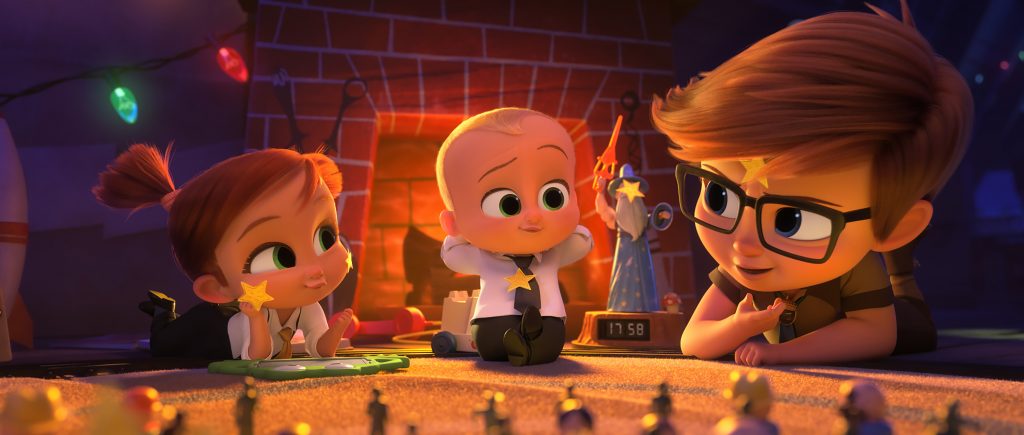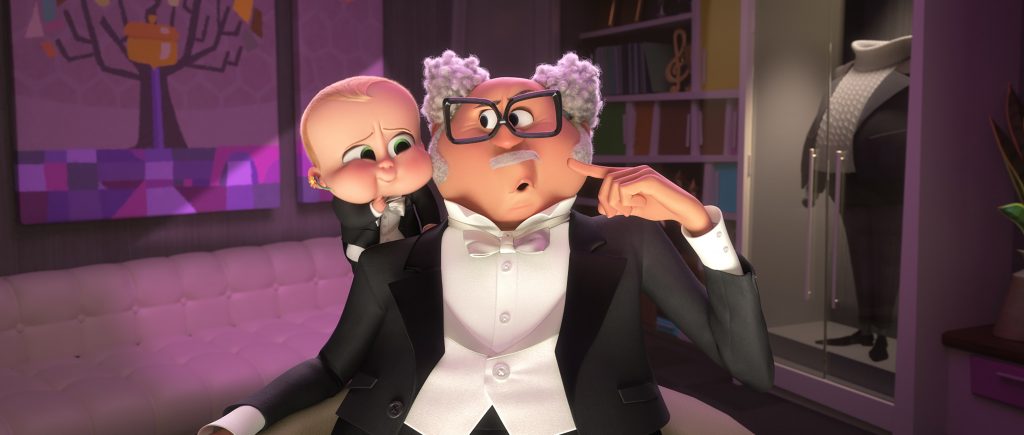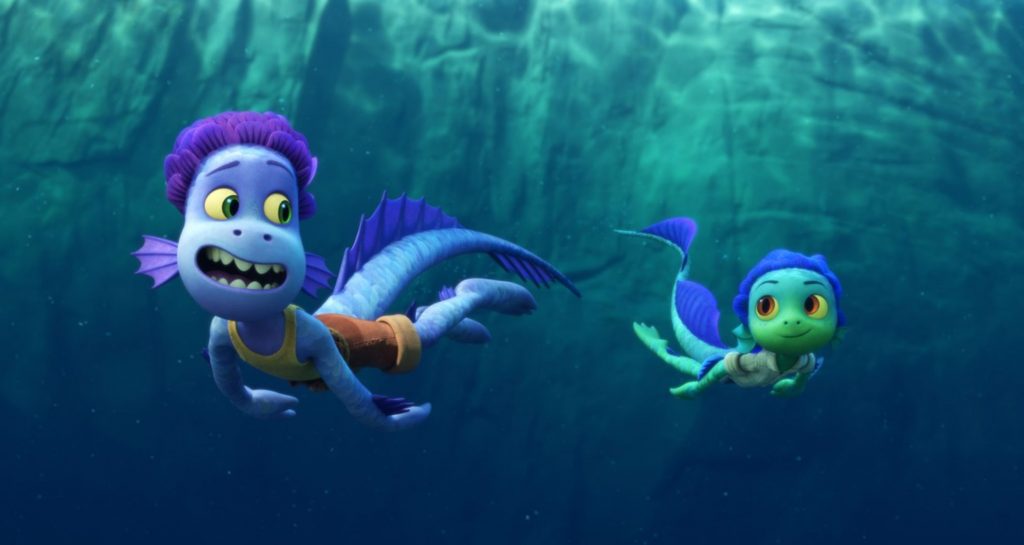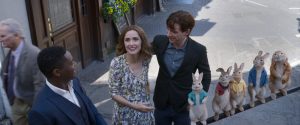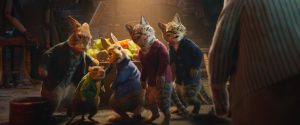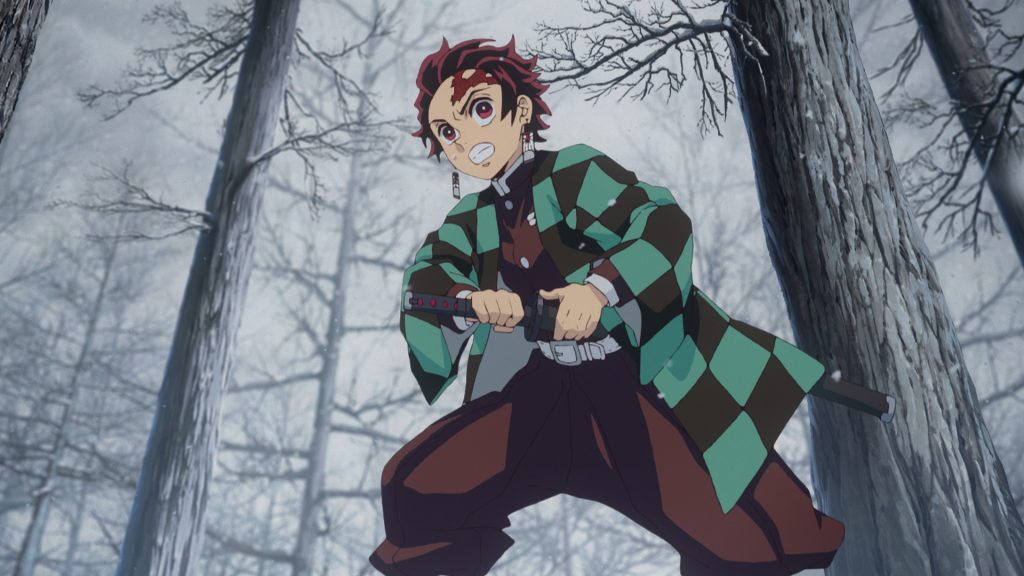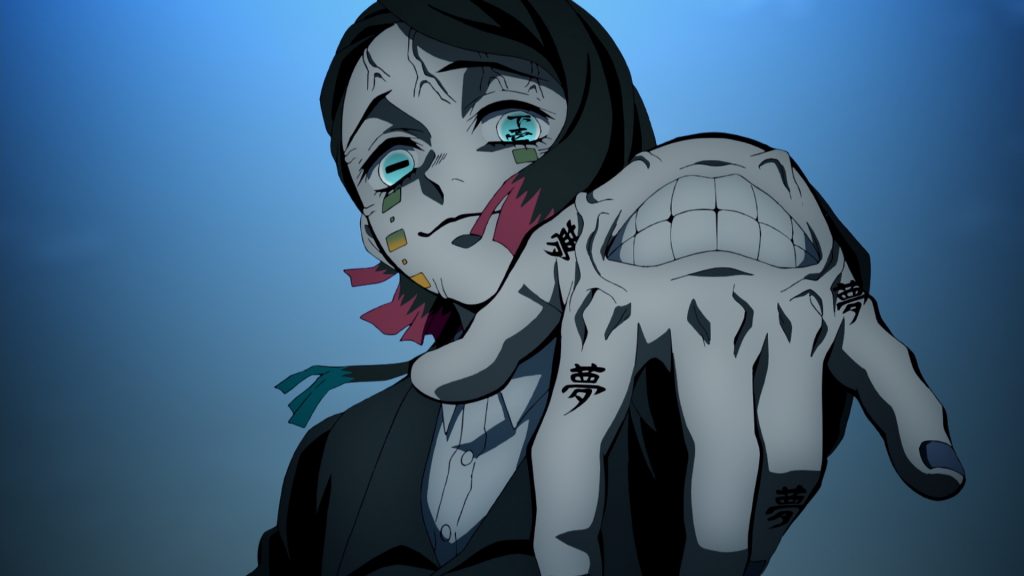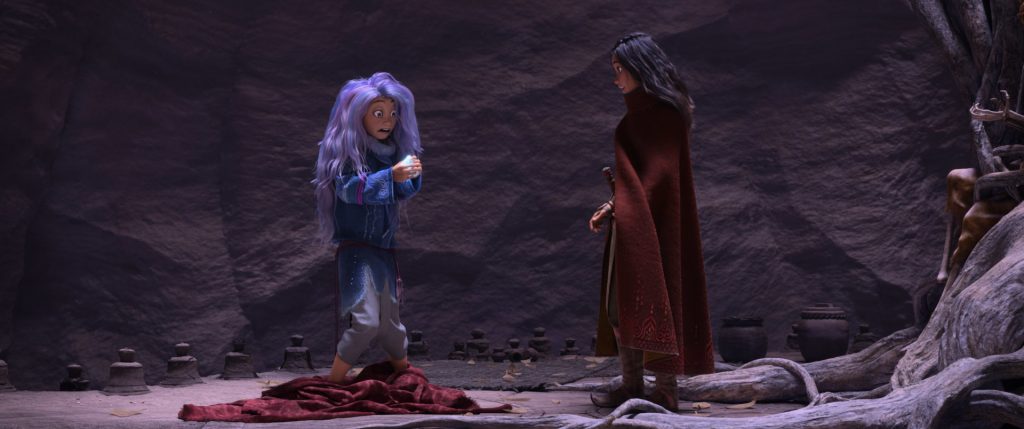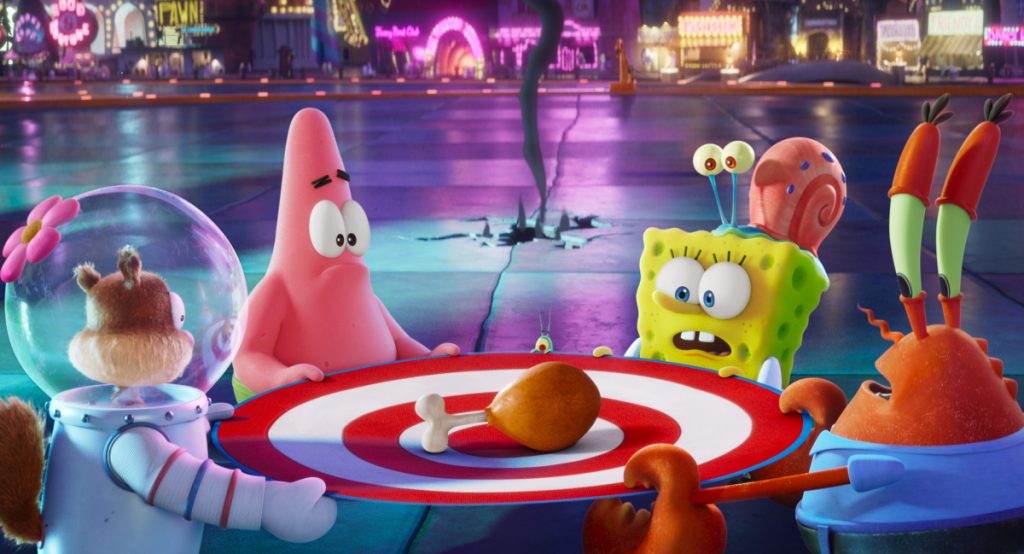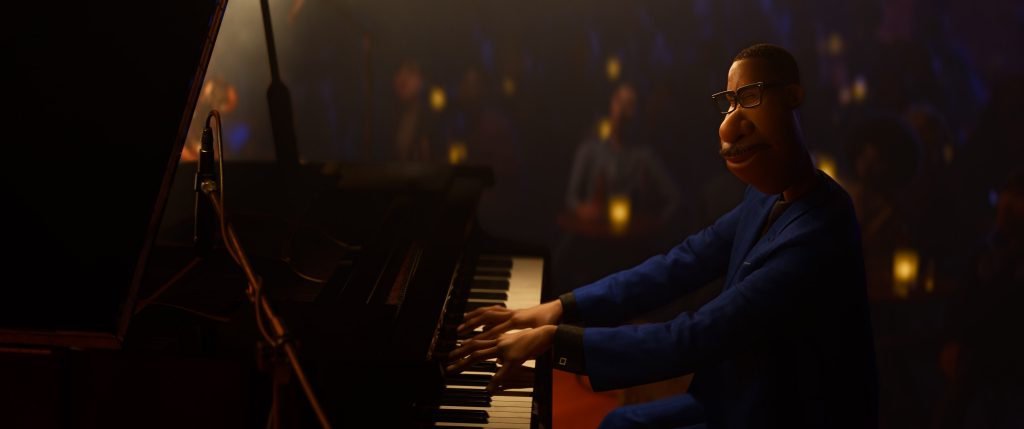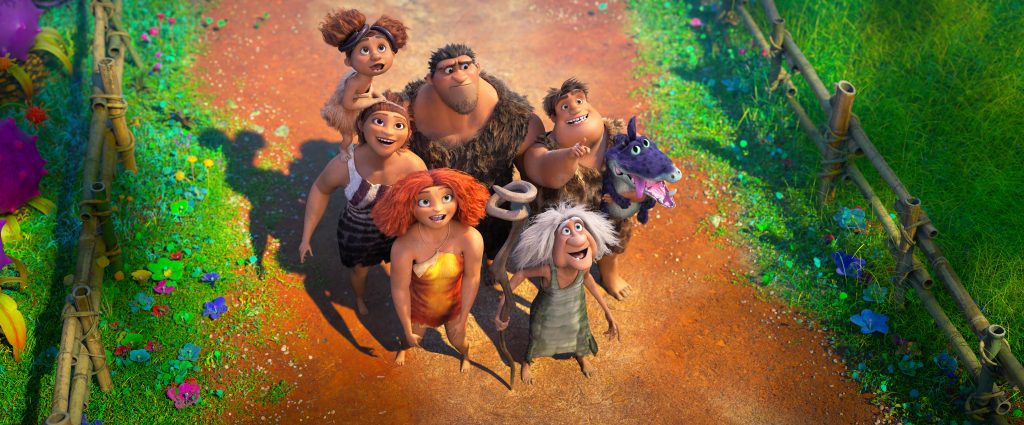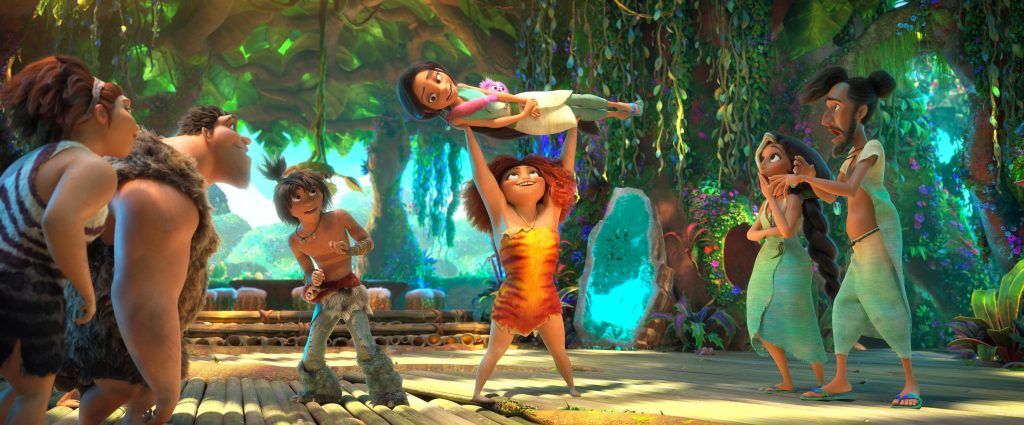August 18, 2021
by Carla Hay

Directed by Malcolm D. Lee
Culture Representation: Taking place in the Los Angeles area and in an alternate technology universe, the live-action/animated film “Space Jam: A New Legacy” features a predominantly African American cast of characters (with some white people, Latinos and Asians) representing the middle-class and wealthy.
Culture Clash: A computer algorithm traps basketball superstar LeBron James in a technology universe, where he joins forces with Warner Bros.-owned Looney Tunes characters for a high-stakes basketball game against computer-generated villains that want to take over the world.
Culture Audience: Besides appealing to the obvious target audience of LeBron James fans and Looney Tunes fans, “Space Jam: A New Legacy” will appeal primarily to people interested in watching a mindless but harmless family film that overloads on shilling for various Warner Bros. entertainment products and services.
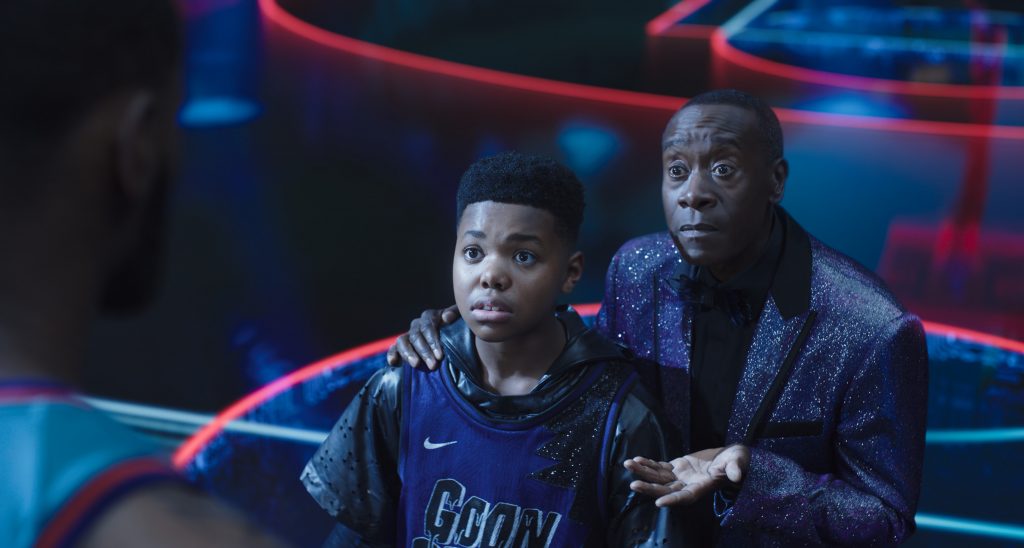
“Space Jam: A New Legacy” is not meant to be a real movie. It’s just a long and witless commercial for Warner Bros. entertainment entities, with LeBron James as a celebrity spokesperson. Even young children and gullible people will notice the over-the-top, shameless plugging of all things Warner Bros. in “Space Jam: A New Legacy.” It’s hard not to miss this obnoxious promotion, because it’s in every scene.
Directed by Malcolm D. Lee, “Space Jam: A New Legacy” is the sequel to 1996’s “Space Jam.” Both are hybrid live-action/animated movies about basketball superstars who team up with Warner Bros.-owned Looney Tunes characters to play against villains in a life-or-death basketball game. Michael Jordan starred in “Space Jam,” which was also a silly movie, but it had a lot more heart and sincerity than “Space Jam: A New Legacy,” which stars LeBron James.
Both “Space Jam” movies have celebrity athletes portraying themselves. All of these athletes have limited acting skills, even if some of these basketball icons have loads of charisma in real life. However, “Space Jam: A New Legacy” is a much more cynically made movie, because its highest priority is selling Warner Bros. characters and products. At least the first “Space Jam” movie made more of an attempt to be humorous and have several significant characters whose purpose was not to be a mascot for Warner Bros.
It’s not a good sign when a movie has more than four credited screenwriters, because it usually means that there were “too many cooks in the kitchen.” “Space Jam: A New Legacy” has six screenwriters: Celeste Ballard, Keenan Coogler, Jesse Gordon, Terence Nance, Tony Rettenmaier and Juel Taylor. And what’s even worse is that all of these “Space Jam: A New Legacy” screenwriters couldn’t come up with a truly original story for this sequel.
“Space Jam: A New Legacy” essentially copies the same template as “Space Jam,” with just a few changes, such as the reason for the big showdown basketball game that happens in the last third of the film. In “Space Jam,” Jordan has to do battle against basketball-playing monsters from outer space that were literally stealing the talent (by suctioning it out in gas form) from NBA stars. In “Space Jam: A New Legacy,” James has to do battle against a computer algorithm (which can take the shape of a man) that has stolen his younger son and created a team of monsters for the basketball showdown.
Each movie opens with a highlight montage of the basketball superstar’s career, up until the movie was made. Each movie has someone saying more than once, “You can’t be great without putting in the work.” Each movie ends exactly how you think it will end.
In “Space Jam: A New Legacy” LeBron’s 12-year-old son Dominic, nicknamed Dom (played by Cedric Joe), is a computer whiz and aspiring video game developer who has been kidnapped by a computer algorithm called Al G. Rhythm (played by Don Cheadle) into the algorithm’s universe called the Warner 3000 server-verse. Inside this server-verse exists everything Warner Bros., including Looney Tunes World.
Dom feels unappreciated and misunderstood by LeBron, who is pushing Dom to become a basketball star. Dom likes playing basketball and is on his school’s basketball team, but he’s an average player, and he doesn’t have the passion for the game like his father does. There’s a predictable scene in the beginning of the film where Dom is playing in a school game, and he misses a shot that causes the team to lose the game.
Dom wants to attend an E3 Game Design camp, but it’s taking place on the same weekend as a basketball camp that LeBron wants Dom to attend. Father and son argue about it. But in the end, LeBron is the adult in charge and tells Dom that he has no choice but to go to the basketball camp. Dom is predictably resentful about this decision and his father’s control over his life.
The rest of LeBron’s family are just filler characters that don’t get much screen time and don’t add much to the story. LeBron’s wife Kamiyah (played by Sonequa Martin-Green) chimes in early in the movie to say to LeBron about his parenting skills for Dom: “I’m worried that you’re pushing him too hard … He doesn’t need a coach. He needs a dad.”
In this movie, LeBron and Kamiyah have two other children: teenager Darius (played by Ceyair J Wright) and kindergarten-age Xosha (played by Harper Leigh Alexander). Darius’ only purpose in the movie is to be a teasing older brother and occasional basketball practice opponent with Dom. Xosha’s only purpose in the movie is to be a cute and charming kid.
Because “Space Jam: Legacy” is a Warner Bros. commercial, LeBron and takes Dom with him to a business meeting at Warner Bros. Studios headquarters in Burbank, California. Also in this meeting is LeBron’s childhood friend Malik (played by Khris Davis), who is now LeBron’s manager. It’s at Warner Bros. headquarters that viewers first see Al G. Rhythm giving a monologue, as he lurks in the recesses of some giant computer mainframe somewhere in a back room.
Al G. Rhythm can take many different shapes and forms, but he comes out looking like Cheadle when he wants to look like a human. Al G. Rhythm has concocted an idea to use Warner 3000 technology to scan LeBron into Warner Bros. movies so that LeBron’s image can replace major characters in these movies. Warner Bros. executives will present this idea to LeBron in this meeting. The unnamed executives are portrayed in cameo roles by Sarah Silverman and Steven Yeun, who look like they know they’re in a dumb movie and just want a quick and easy paycheck.
Al G. Rhythm has a sidekick named Pete, which is a mute blue blob that doesn’t do much but act as a sounding board for Al G. Rhythm. Before the meeting takes place, Al G. Rhythm gives this monologue: “I’ve searched far and wide for the perfect partner for this launch. And I finally found him, Pete. He’s a family man, an entrepreneur, a social media superstar, with millions of fans worldwide. Algorithmically speaking, he’s more than an athlete. He’s a king!”
Is this an algorithm or a LeBron James fanboy? Al G. Rhythm then continues with his ranting manifesto, “I’m stuck in the server-verse. No one knows who I am or what I do. But all that changes today, because Warner Bros. launches the revolutionary technology that I masterminded. Today, it’s my time to shine! Once I partner with King James and combine his fame with my incredible tech, I will finally get the recognition and respect that I so richly deserve!”
There’s just one big problem. In the business meeting, LeBron says he hates the idea of being scanned and put into Warner Bros. movies as a replacement character. (But in real life, apparently, he had no problem being put into a Warner Bros. commercial posing as a movie.) The sycophantic executives agree, and the idea is scrapped.
Al G. Rhythm is angry and insulted that his idea was rejected, so he kidnaps Dom, who becomes trapped in the server-verse. And the only way that Dom can be returned to his family is if LeBron and a basketball team that LeBron has assembled win in a “death match” game against Al G. Rhythm and the villain basketball team that Al G. Rhythm has assembled. All of this requires LeBron to go in the server-verse to find Dom. When LeBron (in animated form) ends up in Looney Tunes World, you know what happens next.
At first, LeBron arrives in Looney Tunes World in simplistic animated form. But then, Al G. Rhythm shows up to “enhance” all the players who will be on Lebron’s basketball team, so they go from looking like hand-drawn 2-D animation to computer-generated 3-D animation. The team is called the Tune Squad. The Looney Tunes characters who are on LeBron’s team act exactly how you would expect them to act.
The “Space Jam: A New Legacy” filmmakers got their money’s worth because a small number of voice actors protray several of the Looney Tunes characters, instead having all of the characters each voiced by a different actor. Jeff Bergman is the voice of Bugs Bunny, Sylvester, Yosemite Sam, Fred Flintstone and Yogi Bear. Eric Bauza is the voice of Daffy Duck, Porky Pig, Foghorn Leghorn, Elmer Fudd and Marvin the Martian. Gabriel Iglesias is the voice of Speedy Gonzales. Zendaya is the voice of Lola Bunny. Candi Milo is the voice of Granny. Bob Bergen is the voice of Tweety Bird. Fred Tatasciore is the voice of Taz.
In opposition to the Tune Squard, Al G. Rhythm has created the Good Squad by enhancing real-life NBA and WNBA star players into computerized mutant super-villains. Anthony Davis is The Brow, a giant blue falcon-like creature with a 30-foot wing span. Diana Taurasi is White Mamba, a super-sized mutant snake. Klay Thompson is Wet/Fire, a creature that can create flames and water, as if that wouldn’t be considered a major foul on a basketball court. Nneka Ogwumike is Arachnneka, a large mutant spider. Damien Lillard is Chronos, a time-manipulating creature that can use Dame Time to slow down opponents while he can quickly use fighting techniques.
The big basketball showdown that serves as the movie’s climax is so formulaic that it will be easy to get distracted by trying to spot all the characters from Warner Bros. movies that are in the audience. The audience is supposed to consists of thousands of LeBron’s social media followers who were beamed in from the Internet. But somehow, those who ended up getting the most prominent placement in the front rows were various characters from Warner Bros.-owned entertaint entities, such as Harry Potter, King Kong, Joker, Wonder Woman, Batman, Superman, Scooby-Doo, Neo from “The Matrix,” Austin Powers, plus characters from “The Wizard of Oz,” “Game of Thrones,” “Gremlins,” “The Mask,” and “Mad Max: Fury Road.”
Some of the Warner Bros. promotion overload is ridiculous and embarrassing to those involved. There’s a scene where Bugs Bunny is dressed as Batman and LeBron is dressed as Robin. There’s a scene where Porky Pig starts rapping in a way that’s has as much hip-hop cred as Judy Garland singing in “The Wizard of Oz.” (In other words: none.)
And there’s even a scene where Al G. Rhythm yells, “King Kong’s got nothing on me!” It’s a famous line said by Denzel Washington in his Oscar-winning role as a corrupt cop in 2001’s “Training Day,” which is (you guessed it) a Warner Bros. movie. After Al G. Rhythm shouts, “King Kong’s got nothing on me!,” King Kong is shown in the audience, crossing his arms in a snit, like a kid who’s been insulted on a playground.
The “family-friendly” messages of “Space Jam: Legacy” are secondary to the constant regurgitation of whatever “intellectual property” Warner Bros. is hawking. The word “inellectual” is an oxymoron for this idiotic film. The animation and visual effects aren’t going to be nominated for any major awards. Much of what happens in the movie is duller than it should be. And even the big basketball game toward the end isn’t very exciting. There’s a big “reveal” about someone on the Goon Squad that’s not surprising at all.
Cheadle is the movie’s only live-action cast member who seems to be having some fun because his performance is deliberately campy. His computer algorithm character has more personality than the human characters in this movie. The rest of the cast members in the movie’s live-action roles give mediocre and bland performances.
Ernie Johnson and Lil Rel Howery portray the basketball game’s announcers in what should have been hilarious roles, but everything these characters say is uninteresting. And unlike the original songs in the first “Space Jam” movie (which featured R. Kelly’s “I Believe I Can Fly”), none of the original songs in “Space Jam: A New Legacy” will become a hit anthem. The lines of dialogue given to the animated characters are also forgettable. The jokes fall flatter than Daffy Duck’s beak.
And as for LeBron James (who is one of the producers of “Space Jam: A New Legacy”), even the filmmakers know he wasn’t cast in this movie for his acting, because he says this line in the movie’s scene with the Warner Bros. executives: “I’m a ball player. And athletes acting—that never goes well.” That’s probably one of the most genuine things said in this overly contrived corporate movie that pushes plenty to sell but ultimately has a shortage of good filmmaking.
Warner Bros. Pictures released “Space Jam: A New Legacy” in U.S. cinemas and on HBO Max on July 16, 2021. The movie is set for release on digital and VOD on September 3, 2021, and on Blu-ray and DVD on October 5, 2021.

